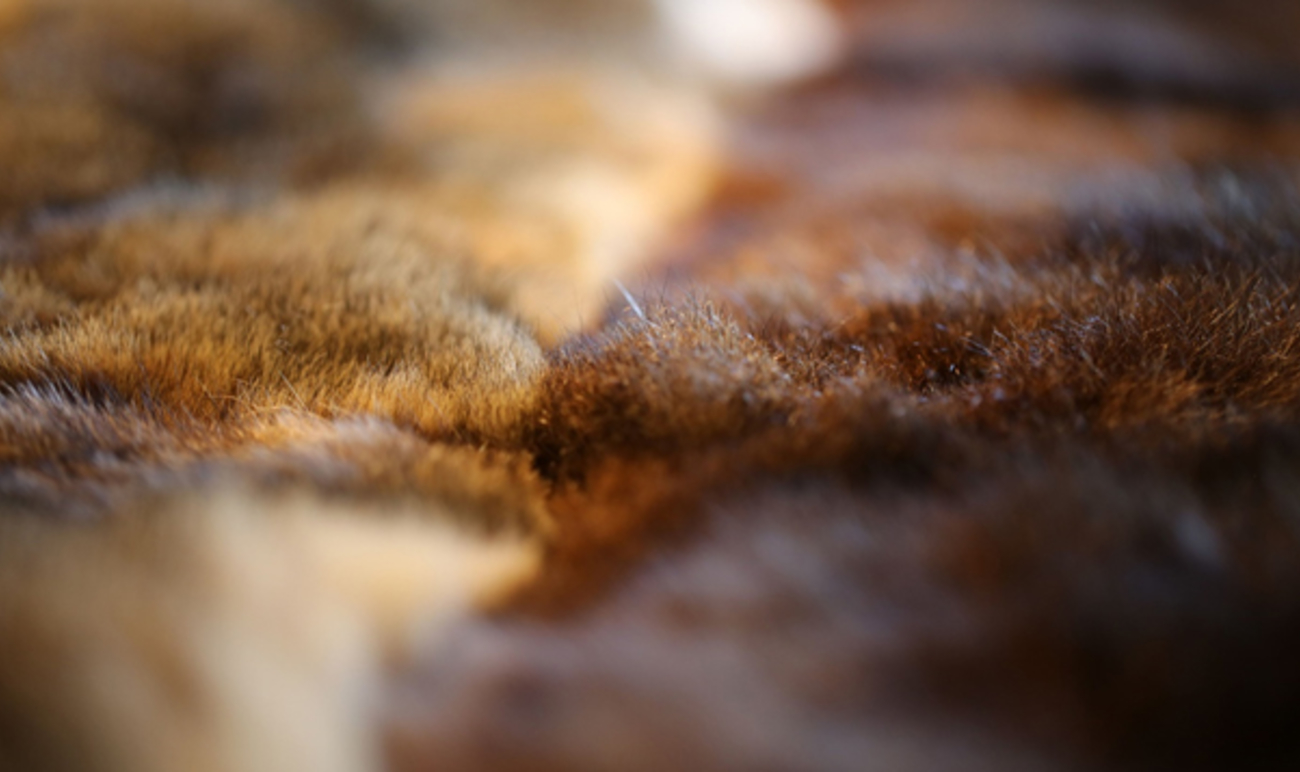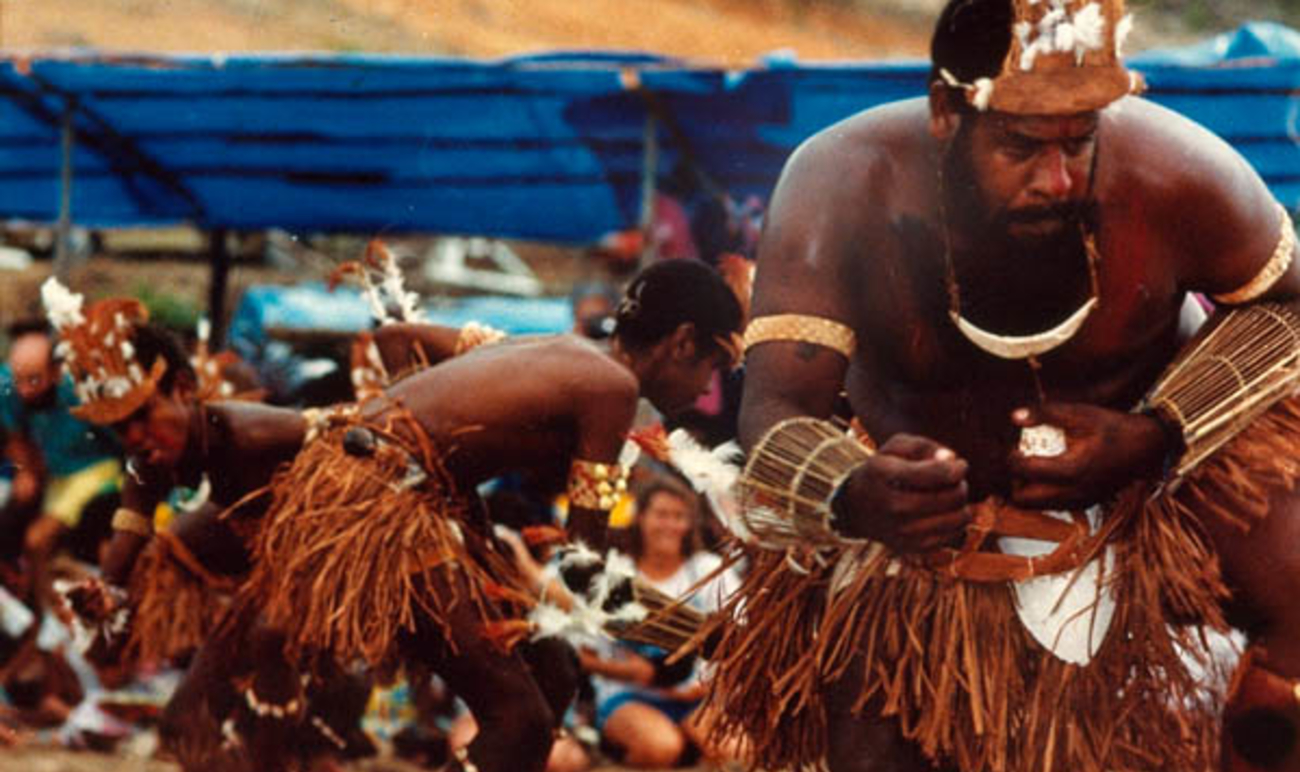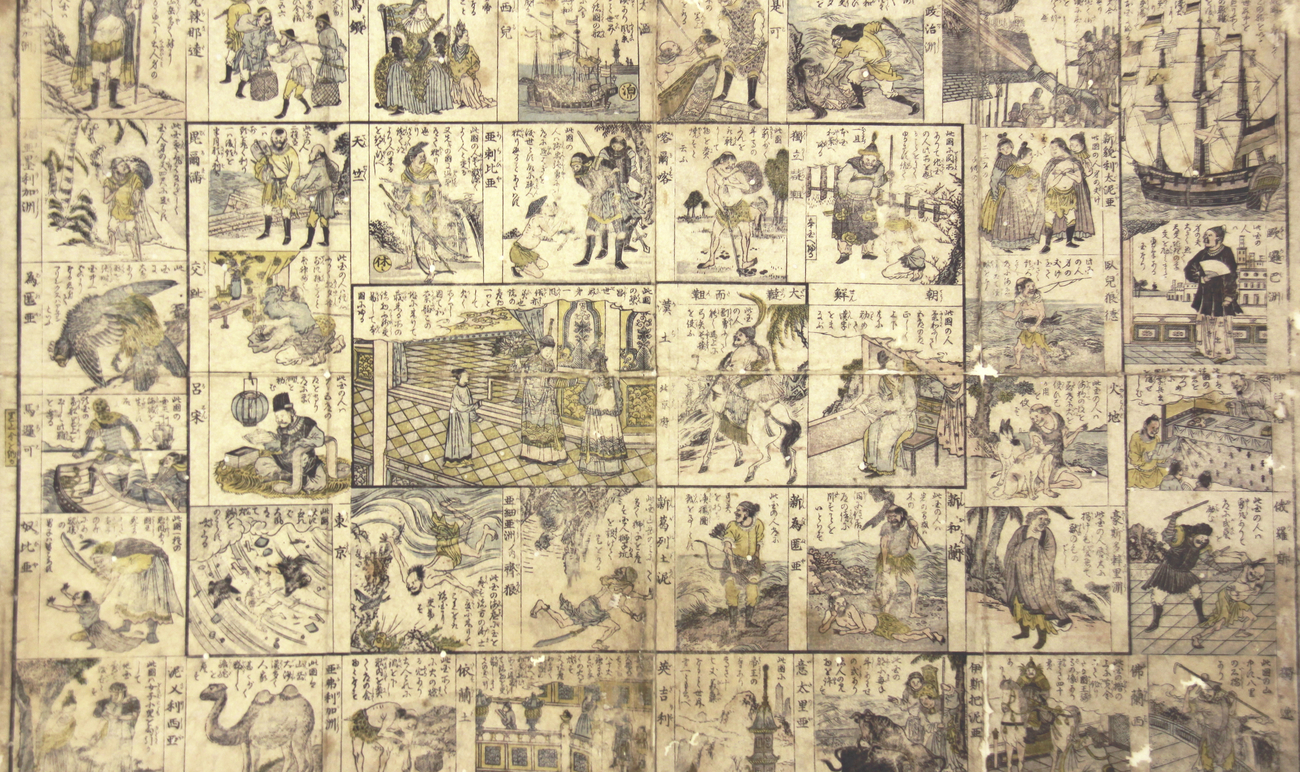Once an everyday item for Aboriginal people in south-eastern Australia, possum skin cloaks were worn for warmth, used as baby carriers, coverings at night, drums in ceremony and for burial.
Worn from a young age, cloaks started out small with a few skins sewn together to wrap a baby. Over time, more skins were added so that as a person grew, their cloaks grew with them.
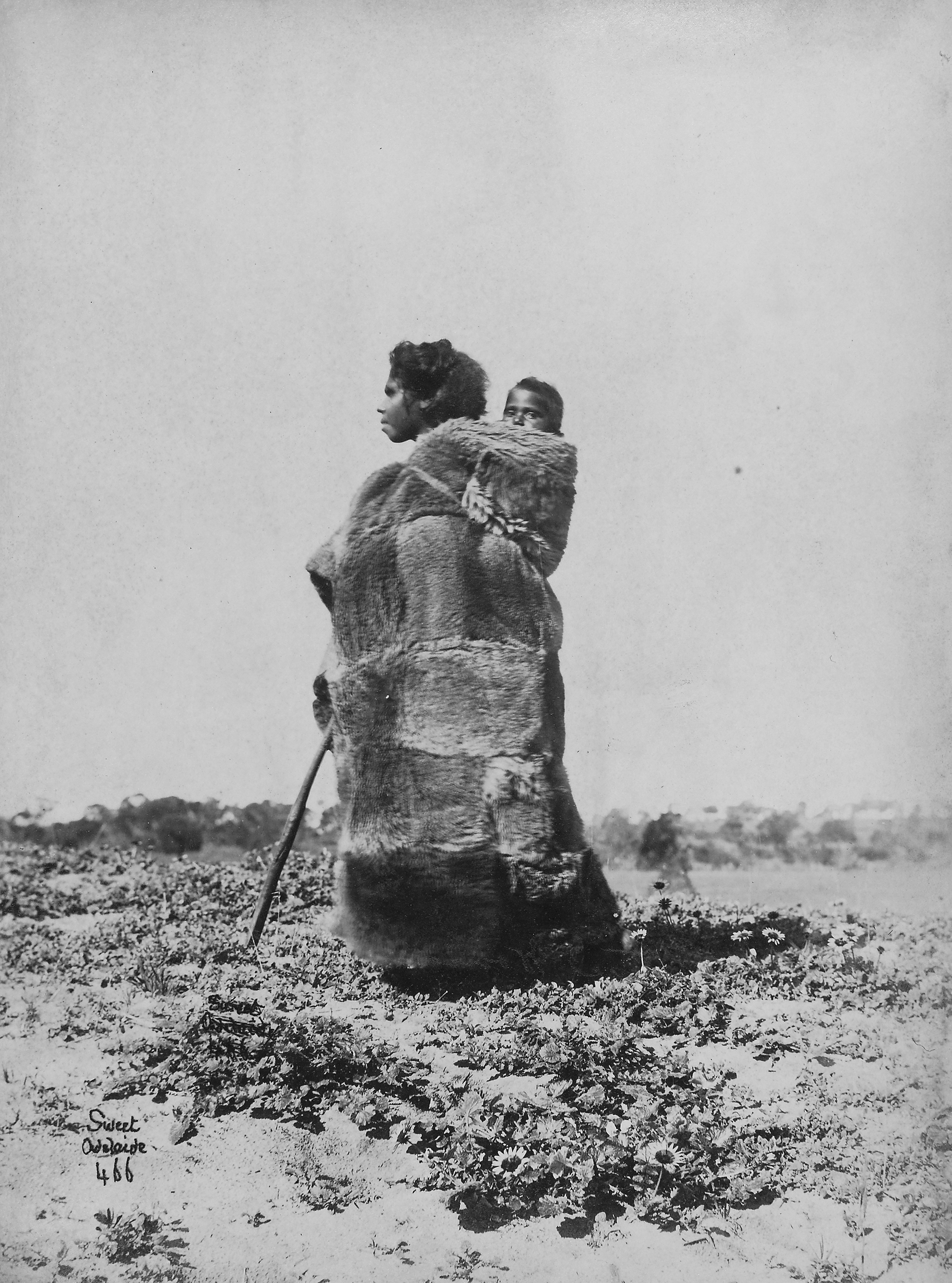
Teenminne, a Ngarrindjeri woman wearing a possum skin cloak carrying a child on her back, South Australia, ca. 1870, National Library of Australia, nla.obj-148825818
Teenminne, a Ngarrindjeri woman wearing a possum skin cloak carrying a child on her back, South Australia, ca. 1870, National Library of Australia, nla.obj-148825818
In the mid-1800s, British colonies across the south-east distributed woollen blankets to local Aboriginal people. Many began using government issued blankets rather than their possum skin cloaks. Woven wool blankets, however, were not as effective as possum skin cloaks. They were not as warm nor were they waterproof and offered little protection from the cold and wet winters of south-eastern Australia. During this time, many Aboriginal people became ill and died from common European colds and influenza viruses.
Only a handful of possum skin cloaks made prior to 1900 still exist today, preserved in museum collections held in Australia and overseas. The scarcity of old cloaks is due both to their fragility and purpose; they were designed to be used during the lifetime of their owner and often as a burial wrapping.
Today, possum skin cloaks remain important to Aboriginal people across the south-east of Australia with new uses and contemporary ways of making.

The AIATSIS possum skin cloak was designed and created by Lee Darroch, a Yorta Yorta, Mutti Mutti and Boon Wurrung artist. The cloak tells the story of AIATSIS as a national cultural institution. AIATSIS Collection, ATS1082.
The AIATSIS possum skin cloak was designed and created by Lee Darroch, a Yorta Yorta, Mutti Mutti and Boon Wurrung artist. The cloak tells the story of AIATSIS as a national cultural institution. AIATSIS Collection, ATS1082.
Possum skin cloak revival
In 1999, artists Lee Darroch, Vicki Couzens and Treahna Hamm were given the opportunity to view for the first time a Gunditjmara cloak from Lake Condah (c.1872), and a Yorta Yorta cloak from Maiden's Punt (c.1853); both held at Melbourne’s Museum Victoria. It was an emotional and inspirational visit. Darroch recalls ‘a sense of the makers being in the room with us’1. For Couzens, a Gunditjmara woman:
Being shown the Lake Condah cloak was like being given an idea from the Old People.2
With permission from Yorta Yorta and Gunditjmara elders, the artists worked with Museum Victoria to repair the old cloaks and make contemporary replicas, a process that ignited intense interest in possum skin cloaks.
Making a possum skin cloak
In earlier times possums would be hunted, the skin carefully removed, scraped with a shell, and then stretched by pegging them out on the ground. Once the skins were sufficiently dried, animal fat would be rubbed into the pelts to make them more pliable.
Using a sharp pointed bone, the edges of the skins were then pierced with tiny holes. Kangaroo sinew was threaded through these small holes and the skins sewn together, using 40 to 70 skins to make an adult cloak.
Wooden or bone pins could be used to fasten cloaks that could be worn skin to skin or with the fur side to the wearer’s skin, exposing intricate designs incised with mussel shell or sharp bone.
Today possums in Australia are a protected species under the provision of the National Parks and Wildlife Act 1974. Cured skins, however, can be legally and ethically sourced from New Zealand, where as an introduced species they are considered an environmental pest. As possums in New Zealand have no natural predators they also grow larger than Australian possums and so today less skins are needed to make a cloak. For example the AIATSIS cloak is made of thirty skins.
Watch Lee Darroch creating the AIATSIS possum skin cloak:
Healing Cloaks
Like many areas in Australia, colonisation had a devastating impact on Aboriginal people. Disconnection to culture and language and dislocation of people continues to have lasting effects. For communities across the south-east, participating in cultural practice has a powerful healing effect.
Lee Darroch has hosted many healing workshops as part of her work with Banmira Arts, a collective of Aboriginal artists and cultural workers.
‘When we run a cloak healing workshop with community and we have a group of people from one language group all together, it is really powerful because the elders will be telling the stories that should go on that cloak. They’re the story tellers and knowledge keepers … and the parents are listening, the young people or teenagers are listening, the little kids are listening. Everyone gets to hear and those stories get put on the cloak and that is really powerful because that’s the Telling.’3
Wearing a cloak, being wrapped in culture, can bring out a range of emotions for Aboriginal people. It is a powerful reconnection back to their ancestors — Lee Darroch.4
Through their work, the artists became teachers, sharing and helping to return the tradition of cloak making to communities across the south-east. Their most ambitious and high profile project was the 2006 Possum Skin Cloak project made in collaboration with language groups across Victoria for the opening ceremony of the Melbourne Commonwealth Games.
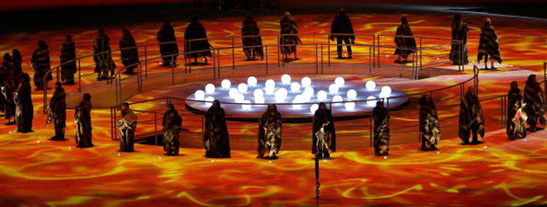
Victorian Aboriginal elders proudly display their possum skin cloaks during the opening ceremony of the 2006 Commonwealth Games in Melbourne. - Toru Yamanaka/AFP/Getty Images.
Victorian Aboriginal elders proudly display their possum skin cloaks during the opening ceremony of the 2006 Commonwealth Games in Melbourne. - Toru Yamanaka/AFP/Getty Images.
Less than twenty years ago there were only a few known possum skin cloaks, today there are approximately one hundred cloaks held in communities and used for welcome to country and other ceremonies.
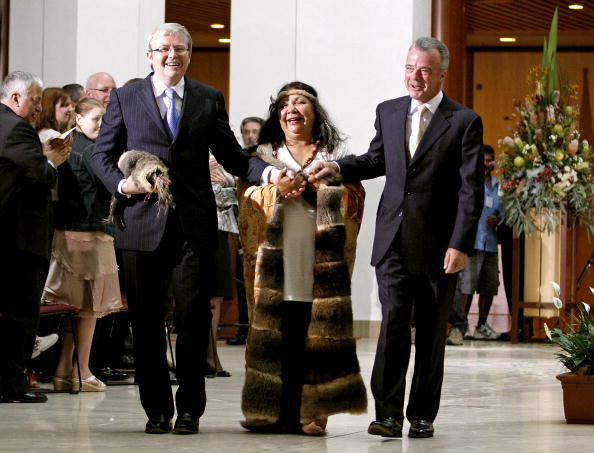
Aboriginal Elder Matilda House with Australian Prime Minister Kevin Rudd (L) and Opposition Leader Brendon Nelson (R) at the opening of the 42nd Parliament at Parliament House on February 12, 2008 in Canberra. Andrew Sheargold/Getty Images News/Getty Images
Aboriginal Elder Matilda House with Australian Prime Minister Kevin Rudd (L) and Opposition Leader Brendon Nelson (R) at the opening of the 42nd Parliament at Parliament House on February 12, 2008 in Canberra. Andrew Sheargold/Getty Images News/Getty Images
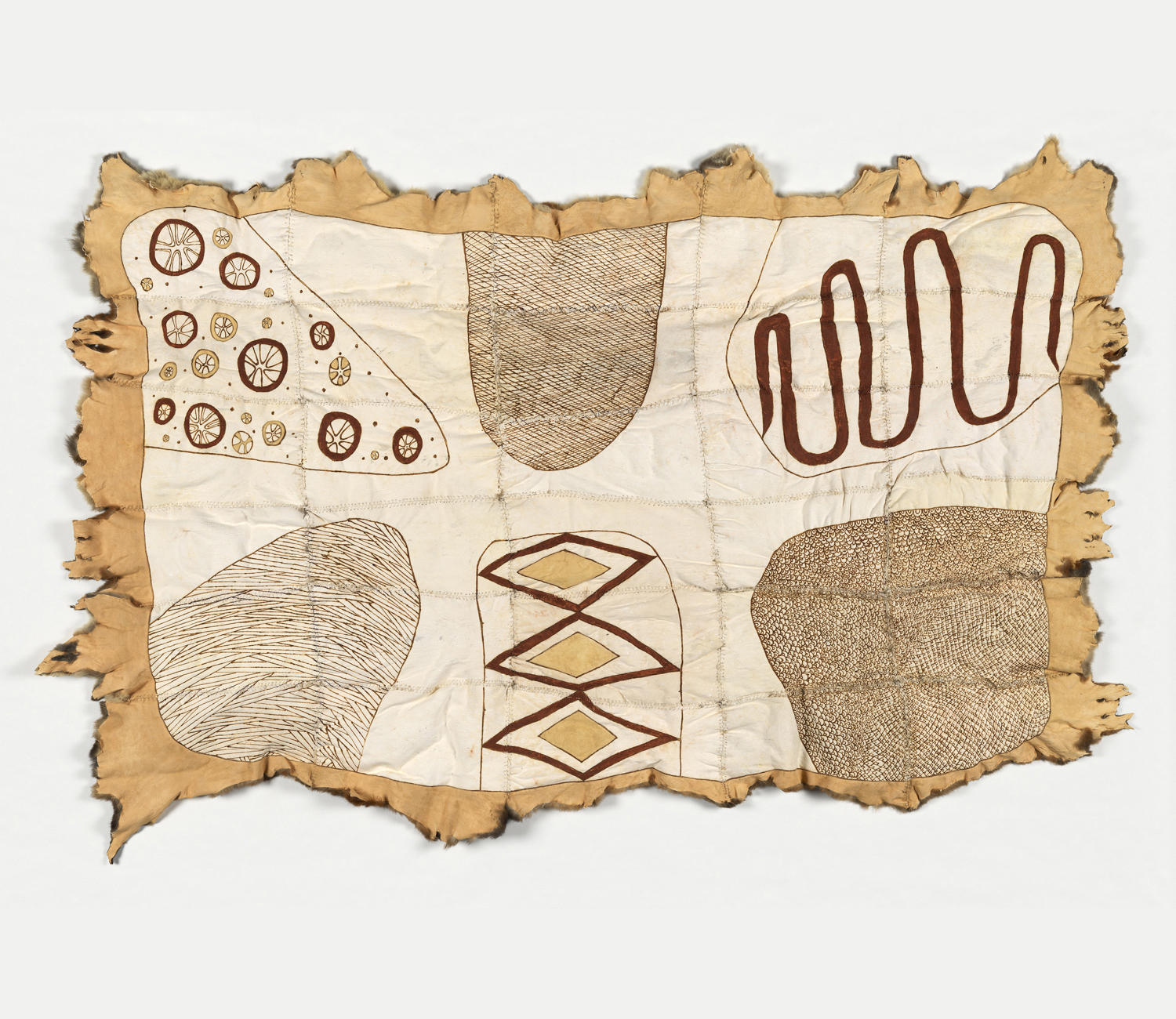
The AIATSIS possum skin cloak was designed and created by Lee Darroch, a Yorta Yorta, Mutti Mutti and Boon Wurrung artist. The cloak tells the story of AIATSIS as a national cultural institution. AIATSIS Collection, ATS1082.
The AIATSIS possum skin cloak was designed and created by Lee Darroch, a Yorta Yorta, Mutti Mutti and Boon Wurrung artist. The cloak tells the story of AIATSIS as a national cultural institution. AIATSIS Collection, ATS1082.
The AIATSIS possum skin cloak
In 2016 Lee Darroch was commissioned to create a possum skin cloak for the AIATSIS collection.
The cloak design features canoe forms that navigate shared waterways depicting the linking of different parts of AIATSIS and the flow of materials and knowledge between communities and AIATSIS.
This is the first time AIATSIS has been represented in an Indigenous Australian cultural form. As part of a living and dynamic culture, the cloak is intended to be worn by AIATSIS representatives on significant occasions.
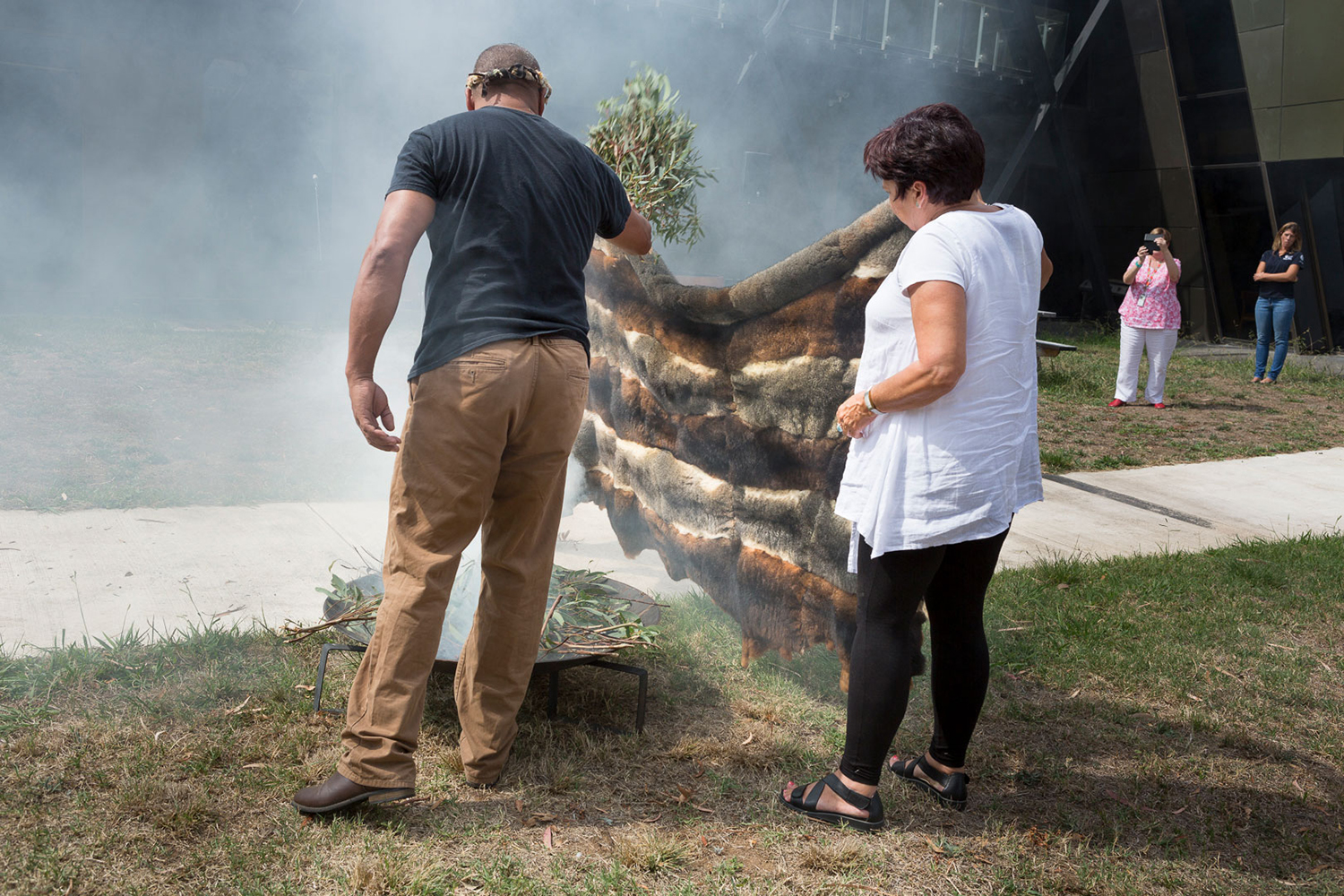
Before the cloak entered AIATSIS a smoking ceremony was held to cleanse the newly created cloak, the artist and AIATSIS staff who would be working with the cloak. Smoking ceremonies are significant cultural rituals to cleanse and heal, which use smouldering leaves, usually eucalyptus, to produce smoke. The ceremony at AIATSIS was conducted by Ngunnawal elder Billy Tompkins pictured here with Lee Darroch.
Before the cloak entered AIATSIS a smoking ceremony was held to cleanse the newly created cloak, the artist and AIATSIS staff who would be working with the cloak. Smoking ceremonies are significant cultural rituals to cleanse and heal, which use smouldering leaves, usually eucalyptus, to produce smoke. The ceremony at AIATSIS was conducted by Ngunnawal elder Billy Tompkins pictured here with Lee Darroch.
References
1 Vicki Couzens and Lee Darroch. “Possum skin cloaks as a vehicle for healing in Aboriginal communities in the south-east of Australia”. In Urban representations : cultural expression, identity and politics. Canberra: Australian Institute of Aboriginal and Torres Strait Islander Studies, 2012. 63.
2 Lee Darroch interviewed by Alana Garwood-Houng at Koori Heritage Trust on the occasion of her exhibition ‘Yenbena biganga, giayimarr biganga: Stitching together the songlines’, 7 October 2016.
3 Lee Darroch interviewed by Alana Garwood-Houng at Koori Heritage Trust on the occasion of her exhibition ‘Yenbena biganga, giayimarr biganga: Stitching together the songlines’, 7 October 2016.
4 Lee Darroch interviewed by Alana Garwood-Houng at Koori Heritage Trust on the occasion of her exhibition ‘Yenbena biganga, giayimarr biganga: Stitching together the songlines’, 7 October 2016.
